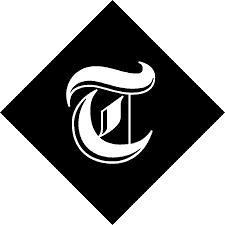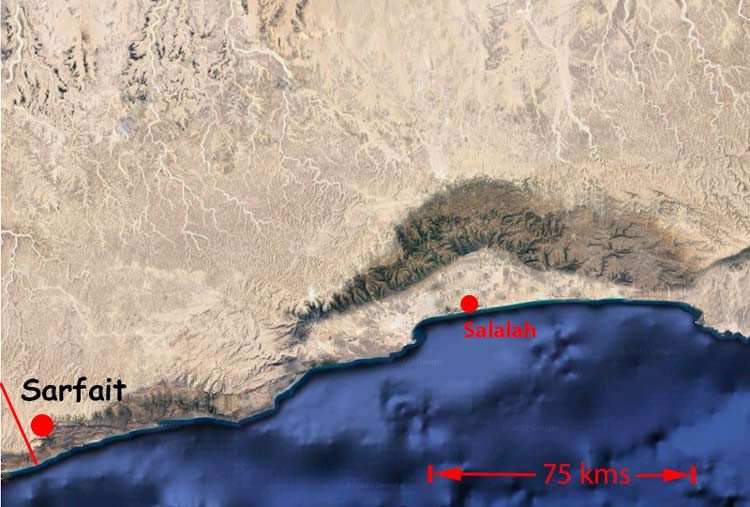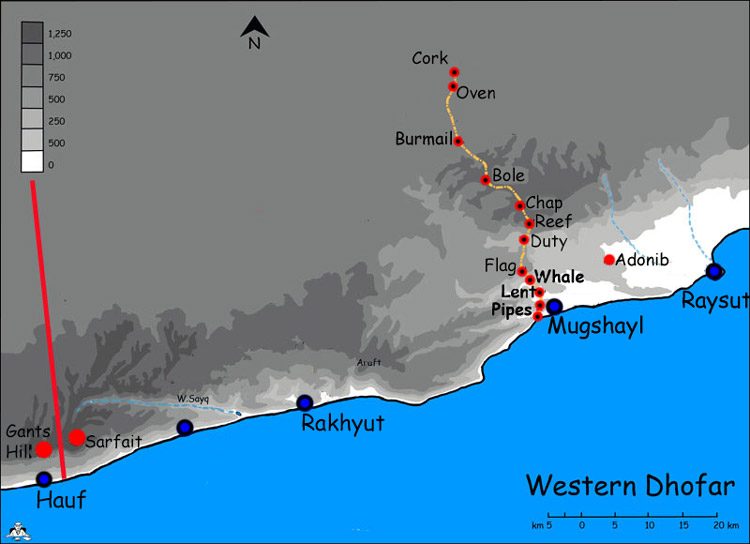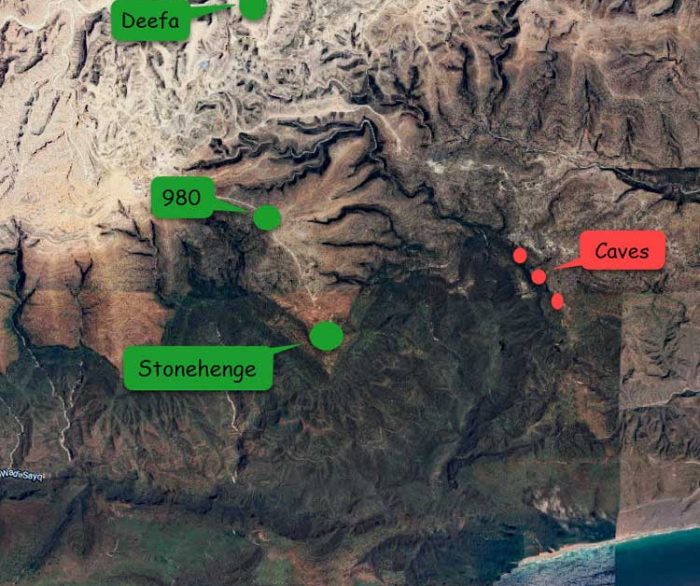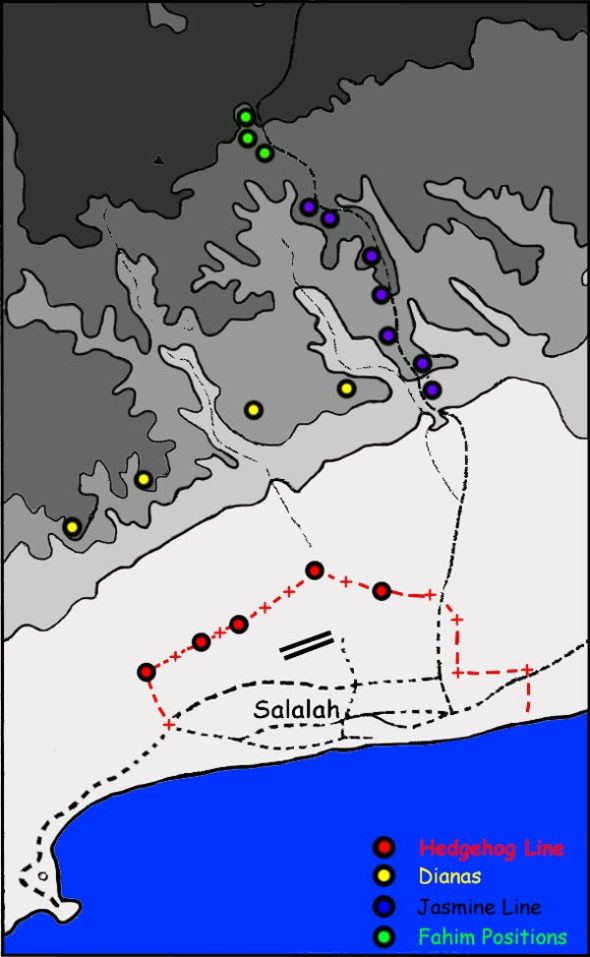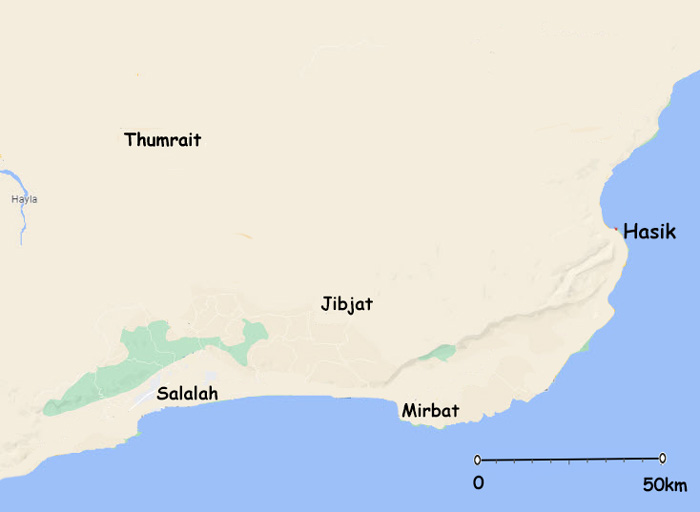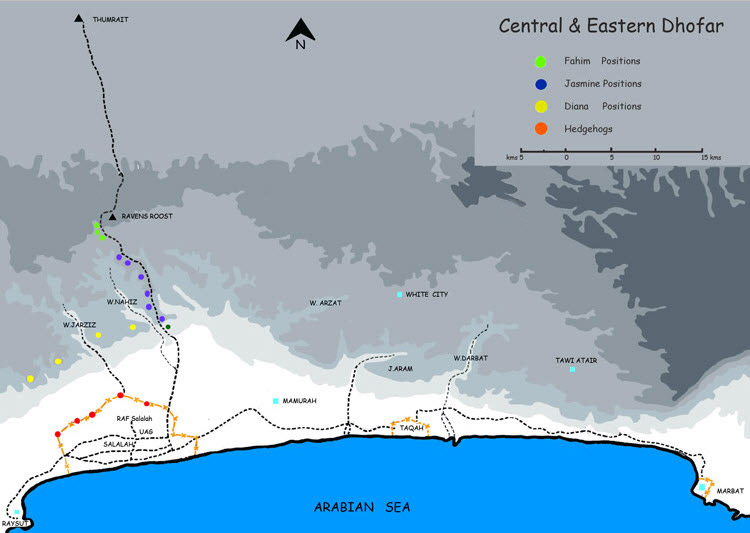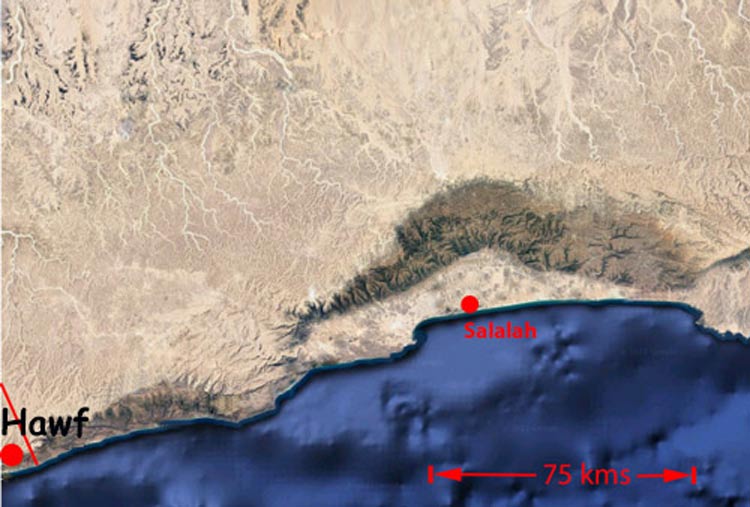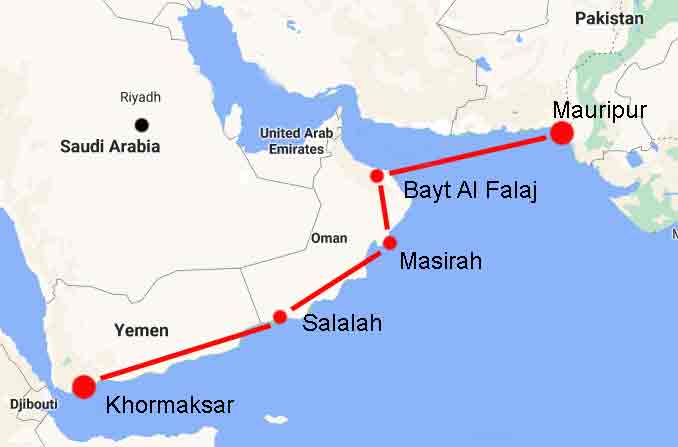
The Recent History of Oman
At the time when the British left Aden in 1967 when the first stirrings of the Dhofar War were occurring ,Oman was ruled by Sultan Said bin Taimur, the present sultan’s father. Although Muscat, the capital of Oman, was in the north, the Sultan preferred Dhofar and lived in his palace, al-Hisn, by the seafront in Salalah.
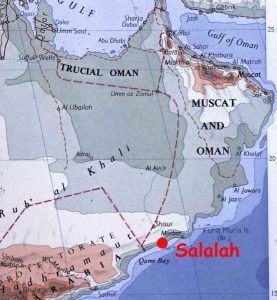
To all intents and purposes he was an absolute ruler and the state was run as a feudal monarchy. He ruled by Royal Decree. His management of the state finances were unadventurous. He was determined to ease the burden of the national debt. He was particularly strict in his views on the observance of the Muslim faith and was intent that the whole of Oman should follow his lead.
He abhorred the changes that were occurring in the surrounding Arab nations and was determined that these changes would not occur in Oman. Irrational restrictions were placed on all manner of things ranging from Coca-Cola to sunglasses. He forbade both transistor radios and cameras. Many restrictions were laid upon the way in which people led their lives and the Sultan was excessively heavy handed when they attempted make changes. Unrest was clearly evident in the country in the early sixties.
The British had involved themselves in the affairs of Oman since the East India Company negotiated a treaty in 1646. The British, more recently, had been giving Oman financial help and assistance especially with their armed forces since 1958. They had helped see off an insurgency in the north of the country where the imam had attempted to seize power aided by other local Arab states and by Egypt.
In 1967 Oman began to have significant revenues from oil that had been found in the country. However the Sultan did not cascade the wealth down and improve the lot of his subjects. Interestingly after his overthrow it was apparent that he had already made plans to do so but was determined not to so do until oil revenues had provided the wherewithal rather than doing so on the expectation of oil revenues. He remained the determined conservative and cautious man who had taken over the throne in 1932.
He was indifferent to his subjects needs and this manifest itself in curious ways. He for example try to prevent his subjects having any contact with foreigners. He would appoint foreigners to important administrative posts rather than native Omanis. The resentment that was already present in the population increased.
There was support for insurgency from the new “Peoples Democratic Republic of Yemen” recently freed from the British.
The last British forces to leave were an RE Airfield Squadron in December 1967. Two of the principle donors of aid to the newly formed Dhofar Liberation Front were Russia and China both of whom provided weapons and training.
As time went by and more confidence was gained the Front changed its name to the “Peoples Front for the Liberation of the Occupied Arab Gulf” The plan was to push up across the border from the south and gradually take over the whole country. The Western view at this time was that a communist country sitting alongside the Straits of Hormuz could exert a stranglehold on the export of oil from the Gulf and destabilise the region.
The resentment felt for the then ruler allowed revolutionary ideology and promises to fall upon fertile ground. The dissidents gradually established themselves in the Dhofar region using aggressive methods to control the population and bring them over on to their side. In many ways this is surprising that this was effective as the treatment that they meted out to the population in areas under their influence was unquestionably brutal and contrary to Islamic practice.
At first PFLOAG achieved considerable success in the south and were able to mount a guerrilla war that had partial support from the local population. The tribes on the jebel were more often than not split up into factions who main recreation was violent squabbles with each other that often festered on as long term grudges. The dissidents were not hindered significantly by SAF and emboldened by their success continued to advance along the jebel towards Salalah and then onwards to the north east of the plain.
The sultan had one son, Qaboos bin Said who had been educated partly in the West. He had the good fortune to live with a family in Suffolk for a considerable time. ( I would say that coming from the Norfolk/Suffolk border with BurySt Edmunds as my local large town ! ) ( see “Sultan in Suffolk” in the Documents section of this website ).
He had attended Sandhurst military academy and then served as an officer in a Scottish regiment the Cameronians whose sobriquet “The Poison Dwarfs” was earned on the streets of Minden shortly before they were disbanded . On his return to Oman he was isolated by his father in the palace in Salalah and apparently had little influence or importance.
On the 23rd July 1970 Qaboos with help almost entirely from British officers and at the instigation of Her Majesty’s Government, was complicit in the overthrow of his father. It was an almost bloodless coup.The violent assault on Said bin Taimur resulted in gunshot wounds to himself and others before Qaboos gained control of the country.
Qaboos ruled in a more enlightened manner than that of his father. He appeared to be sympathetic to the needs and expectations of his fellow countrymen and anxious to develope the country. This may have been partly a pragmatic approach as his people that revenue from oil could buy an improvement in their lives which was most attractive. Oil was just beginning to flow.
The confounding factor was the ever increasing presence of PFLOAG in the south who, by this time, were well established on the jebel overlooking Salalah. Indeed they were able to come onto the plain at night , fire RCLs and mortars at the RAF airfield near Salalah, and return to the jebel before dawn. SAF appeared to be limited in their effectiveness to prevent these actions.
RAF Salalah had been in existence since WWII and was administered by the RAF as part of an agreement for the use of the Masirah airfield as a staging post. In 1972 the CO of RAF Salalah was an RAF Squadron Leader – Gerry Honey- and there were a number of RAF officers there plus a large number of SOAF ( Sultan of Oman’s Airforce) seconded and contract officers. There were also a number of smaller units such as the RAMC FST, Royal Artillery (Cracker Battery) Royal Engineers, Signallers, RAF Regiment and a few “snowdrops”. Maintenance of the SOAF aircraft was effected by AirWorks.
The BATT (British Army Training Team) was an SAS unit that had it’s headquarters at Umm al Guarriff a few miles to the NE of RAF Salalah. The primary purpose of the FST was to be in support of the BATT. Various other specialists were also attached to BATT such as the veterinary officers.
The Sultan had a small army of four regiments officered mainly by British contract or seconded officers. In the spring of 1972 the Sultan’s forces were quite limited in what they could do and where they could venture without vigorous interference from the dissidents. There were a number of SAF and BATT bases on the jebel which were helicopter supplied and came under regular attack. The plain surrounding Salalah was a dangerous place both by day and at night; ambushes occurred and the tracks were mined. RAF Salalah itself was subject to attack by RCL and other means. The situation became even more serious as the monsoon degraded the capabilities of all types of aircraft. The dissidents, less liable to attack from the air, were able to move with greater freedom in the mists and their camel trains bringing supplies from the south were only subject to minor interdiction.
In an attempt to tip the balance the dissidents determined to attack and capture and temporarily occupy a small fishing village, Mirbat, on the coast to the north east of Salalah. They assembled a force about two hundred strong and on the morning of the 19th of July attacked. There are many accounts of this engagement which was one of the most significant events in the war. In the event they all but overwhelmed the BATT defenders and would have done so had they not been driven off by the SOAF Strikemasters.The medical details of those wounded in the battle are recorded in the “Clinical” section of this website.
The underlying strategy in the war was to win over the inhabitants on the jebel – the jebalis – village by village until the whole of the jebel from the border with PDRY was under the influence of the central government. SAF with BATT manipulating the firqats took possession of areas of the jebel one by one. RE drilled boreholes, trading and medical centres were set up. Schools were set up. Veterinary help was given and aid was provided to encourage agriculture. Security was largely provided by local firqats supervised initially by BATT. Once one area was made safe and shown to be safe for further civil development the process was repeated in the next group of villages or a tribal area until the whole of the jebel was returned to government hands. The improvement in local conditions, dependent on the government, gave the jebalis little inclination to provide an infrastructure supporting the dissidents. The government had demonstrably improved the quality of life for the jebalis where the dissidents had brutalised them.
The strategy was successful and by 1975 the whole of the jebel was declared to be free of the enemy and “safe for civil development”. In 1970 when Qaboos took over Oman had 10kms of hard topped road, one hospital, few schools and very few opportunities for women.
And what has happened since 1975 ?
The conditions that obtained then have changed out of all recognition and a visit by the webmaster in December 2010 shows the jebel to have extensive hardtop roads, electricity and sufficient borehole water for the inhabitants and flocks.
The United Nations Index comments that “Oman is the most improved nation in the last 40 years”
Oman is an absolute monarchy and Sultan Qaboos, head of both state and government, rules by Royal Decree. A consultative council, the Majlis Al Sura was created in the early 90s whose 83 members, locally elected, gain office once approved by the cabinet and finally selected by the sultan. They have no legislative powers but serve to channel local opinion to the upper layers of government. Political parties are not allowed in Oman.
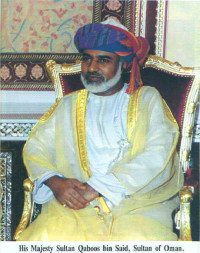
04/03/2011
Recent announcements would suggest that in the wake of current unrest there may be moves being implemented which give the council legislative powers in a move towards a form of democratisation. However “If it ain’t broke don’t fix it”
08/01/2015
Newspaper reports have suggested that Sultan Qaboos, who is reported to have been on his estate in Germany for many months, is undergoing treatment for an unspecified malignancy which has been speculated to be cancer of the colon.
He did make an appeance on Omani television and was said to have looked most unwell.
08/01/2015
Sultan Qaboos returned from Germany a few days ago. It was reported in the Times of Oman that his return would boost the economy.
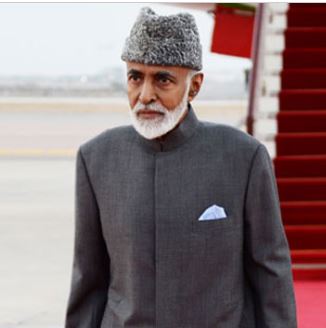
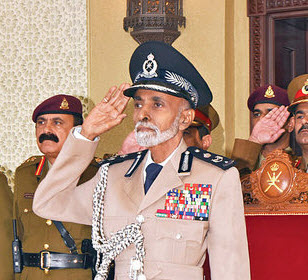
.Sultan Qaboos presided over the National Day parade on the 18th of November 2018. Omani television, whilst he appears to have lost much weight, shows him walking unaided to his car and getting inside without difficulty.
31st December 2019 18:00
The sultan returned from Belgium where he had “checks” earlier in the month at Leuven’s university hospital. His accompanying entourage of seventy took over an hotel in the main square.n’s Sultan Qaboos bin Said is in “stable condition” and is continuing with medical treatment, according to a statement from the Sultan’s office shared on state television.
11th January 2020
The death of Sultan Qaboos bin Said is announced and Haitham bin Tariq is named as his successor.
